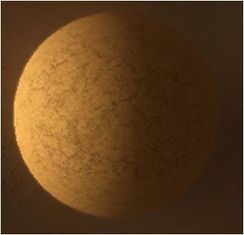Difference between revisions of "Planet Waterford"
From Discovery Wiki
Jump to navigationJump to searchm (category added. Non canon RP info removed. If we start to add any Player RP, we will end up in a mess. A link in the "See also" section is enough) |
|||
| (5 intermediate revisions by 5 users not shown) | |||
| Line 1: | Line 1: | ||
| − | {{Version|4. | + | {{Version|4.91}} |
{{Planet Infobox | {{Planet Infobox | ||
| name = Planet Waterford | | name = Planet Waterford | ||
| − | | image = Waterford.jpg | + | | image = Planet Waterford.jpg |
| owner = | | owner = | ||
| system = [[Leeds]] | | system = [[Leeds]] | ||
| Line 17: | Line 17: | ||
A beautiful but barren world of magnificent ice formations. [[Glasgow Outpost]] orbits the planet, headquarters for [[Bowex]]. While Bowex often collects natural ice sculptures from the surface for use as place settings for official banquets, Waterford otherwise lacks any useful resources. | A beautiful but barren world of magnificent ice formations. [[Glasgow Outpost]] orbits the planet, headquarters for [[Bowex]]. While Bowex often collects natural ice sculptures from the surface for use as place settings for official banquets, Waterford otherwise lacks any useful resources. | ||
| − | |||
| − | + | See also: | |
| − | |||
| − | |||
| − | + | * [http://discoverygc.com/forums/index.php?showtopic=99178 CSR surveillance mission #2] | |
| − | |||
| − | |||
| − | + | [[Category: Bretonia]] | |
| + | [[Category: Leeds]] | ||
Latest revision as of 11:38, 23 February 2019
| Planet Waterford | |
| Location | 3E, Leeds |
| Technical information | |
| Docking | No |
| Terrain | Ice |
| Diameter | 11,679 km |
| Mass | 5.32 x 10e24 kg |
| Temperature | -74°C to -58°C |
| Escape velocity | 11.03 km/sec |
A beautiful but barren world of magnificent ice formations. Glasgow Outpost orbits the planet, headquarters for Bowex. While Bowex often collects natural ice sculptures from the surface for use as place settings for official banquets, Waterford otherwise lacks any useful resources.
See also:
